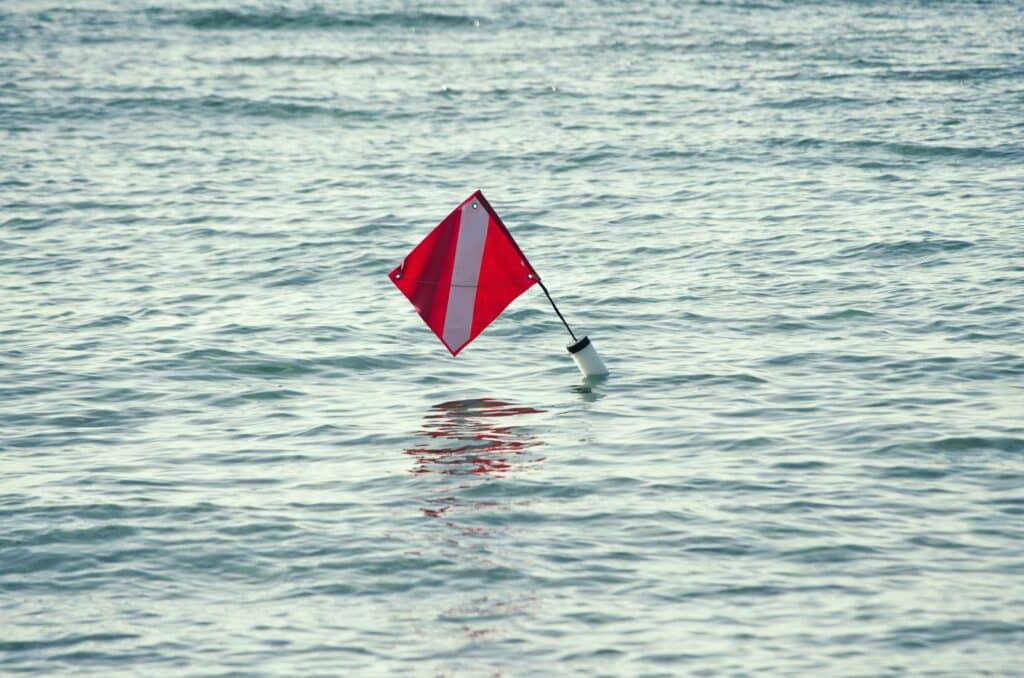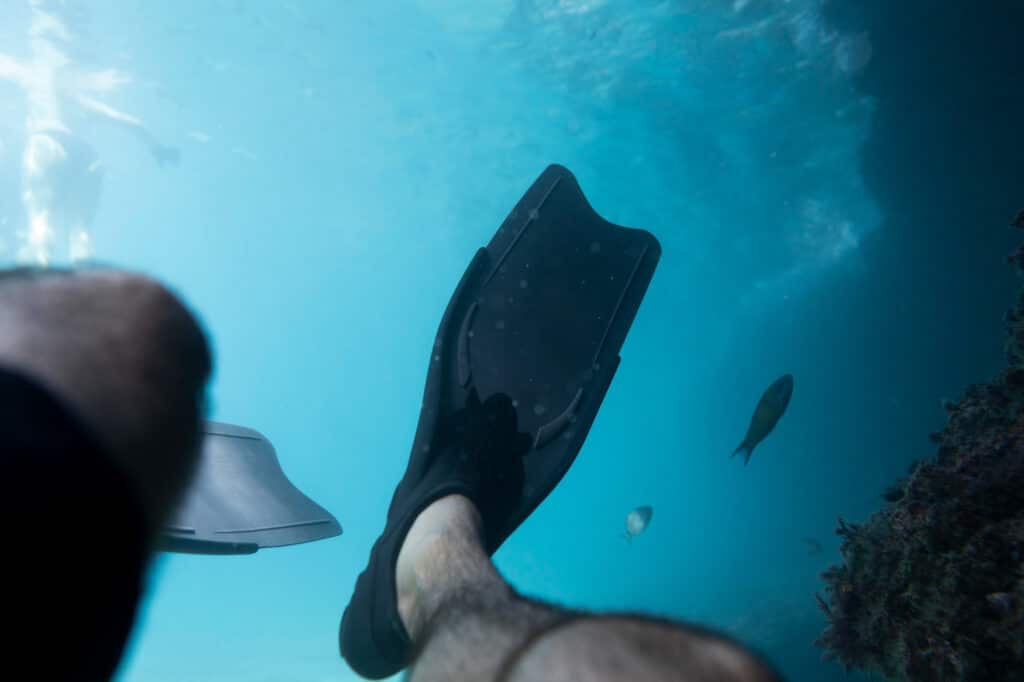Surely, if you are an experienced diver you know all about diving flags and floats. On the contrary, if you are a beginner, one of the questions that must be on your mind is, how far away should I stay from my dive flag?
Dive flags and marker floats are essential safety features on any dive. Their main purpose is to warn boats of the presence of divers in the area and reduce the risk of accidents.
These devices help to delimit the diving area, making it easier for divers and boats to respect the space necessary for safe diving. Their visibility is key, especially in waters with a high influx of maritime traffic.
What does a dive flag indicate?
Dive flags are a visual means of communication used at sea to indicate that divers are submerged in a specific area. Their function is to alert boats and others in the water to slow down and maintain a safe distance.
In many countries, maritime legislation establishes strict rules on the use of diving flags. Some of these rules generally include:
- Vessels must keep at least 50 meters away from the dive flag to avoid accidents. In international waters, the recommended distance may be greater.
- Divers should stay within 15 to 30 meters of the flag to ensure that they are visible at all times.
- Boaters should reduce their speed when passing near a dive flag and be on the lookout for possible divers on the surface.
Failure to follow these rules can result in serious accidents, so both divers and boaters should be fully informed of their importance.
What types of dive flags are there and what do they mean?
There are two main types of diving flags that are widely recognized internationally, each with its own specific meaning and regulations:
Alpha Flag
Alpha flags are white and blue with a vertical white stripe and a vertical blue section ending in a horizontal “V” shape. It is used in international waters and in most European countries. It indicates that divers are in the water and that vessels should keep clear or move with extreme caution. It is mandatory in many countries and is placed on vessels that have divers in the water.
Bravo Flag
The Bravo flag is red with a diagonal white line. It is most common in North America, although it is also used in other regions of the world. It indicates “divers in the water” also signals the presence of divers in the water and alerts vessels to avoid the area and reduce their speed.
Both flags have the same function: to mark the area where there is diving activity and to protect divers on a dive. Depending on where you dive, it is important to know what the current regulations are and which flag to use.

How far away should I stay from my dive flag and why?
The ideal distance you should stay from your dive flag may be influenced by factors such as local legislation and environmental conditions. However, this is an essential aspect to take care of, to avoid accidents and to ensure visibility at the surface. Although regulations may vary from region to region, there are some general recommendations:
- Stay within a radius of 15 to 30 meters from the flag so that vessels can identify the dive site.
- Avoid wandering too far away, as you may leave the safety area and increase the risk of encounters with boats.
- In areas with strong currents, stay closer to the flag so as not to lose visual reference.
- Use a personal buoy if you plan to dive away from the main flag to improve your visibility.
Although regulations may vary from one country to another, boats must stay at least 50 meters away from a dive flag to ensure the safety of divers. Respecting these rules can prevent accidents and ensure a safe dive.
What are the risks of moving away from my dive flag?
Moving away from the dive flag involves risks such as collisions with vessels, difficulty in being located in emergencies, exposure to dangerous currents, disorientation and possible legal violations. To avoid these problems, it is crucial to stay close to the flag, use it as a reference and communicate your position.
Tips to avoid risks
- Always stay close to the dive flag.
- Use a line or float line connected to the flag if necessary.
- Communicate your position and plans to your dive buddy or surface team.
- Check sea conditions and currents before diving.
Safety in diving is paramount, and the flag is a key tool to ensure it.

What are diving buoys?
Dive buoys are floating devices designed to improve the visibility and safety of divers on the surface. They function as a complement to dive flags, facilitating the identification of divers’ location and alerting nearby vessels.
Types of diving buoys
- Surface buoy with flag: It is a float that holds the diving flag, indicating the diving area to the navigators.
- Decompression buoy (DSMB): Used to signal the diver’s position when ascending, it allows boats and dive buddies to easily locate the diver.
- Personal marker buoy: Attaches to the diver by means of a reel and allows the diver to remain visible during the dive.
The use of dive buoys is highly recommended on any dive, as it improves safety and facilitates communication at the surface.
Learn more about safe diving
At Dive Academy Santa Pola, we offer unique dive training and experiences, plus, of course, the proper use of dive flags. If you want to learn more and improve your technique, we recommend our PADI Open Water Course, where we will teach you everything you need to dive with confidence and safety.
Explore the underwater world safely with Dive Academy Santa Pola and live an unforgettable experience!

